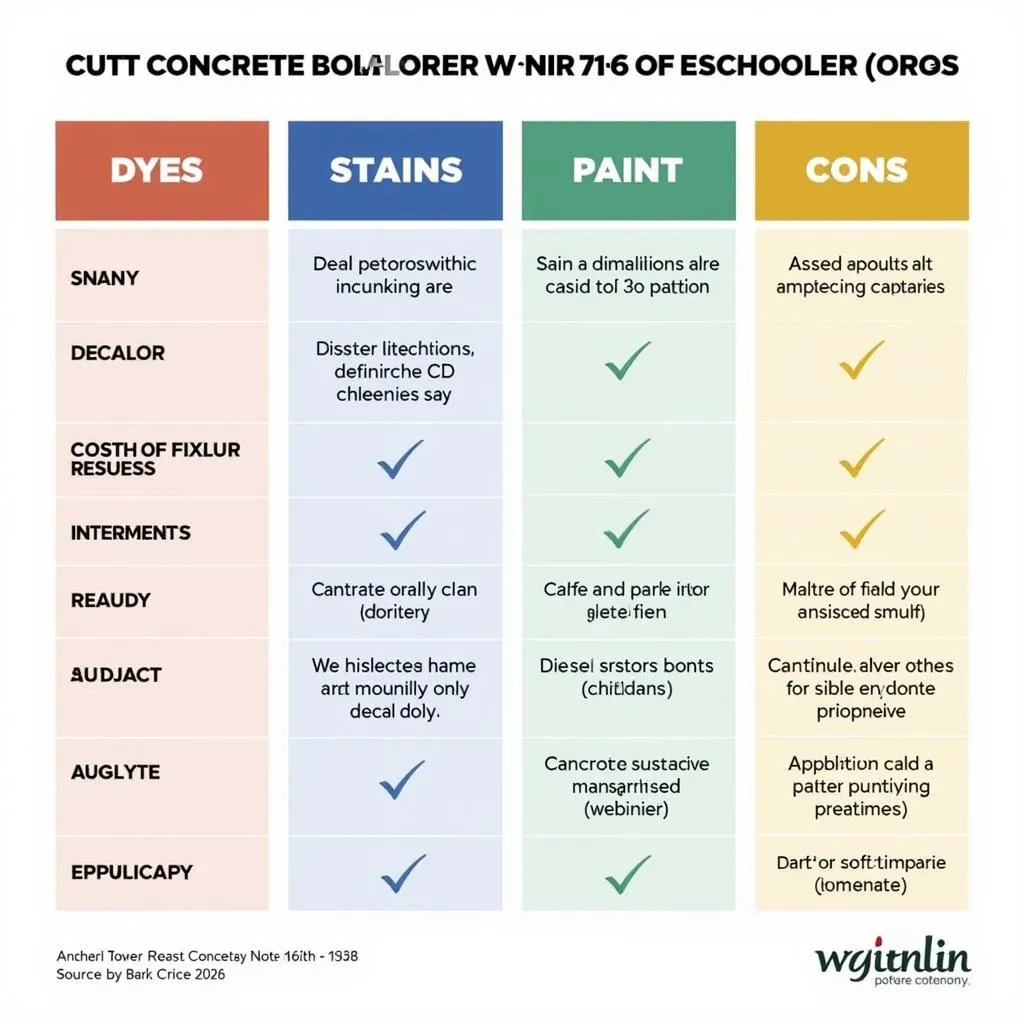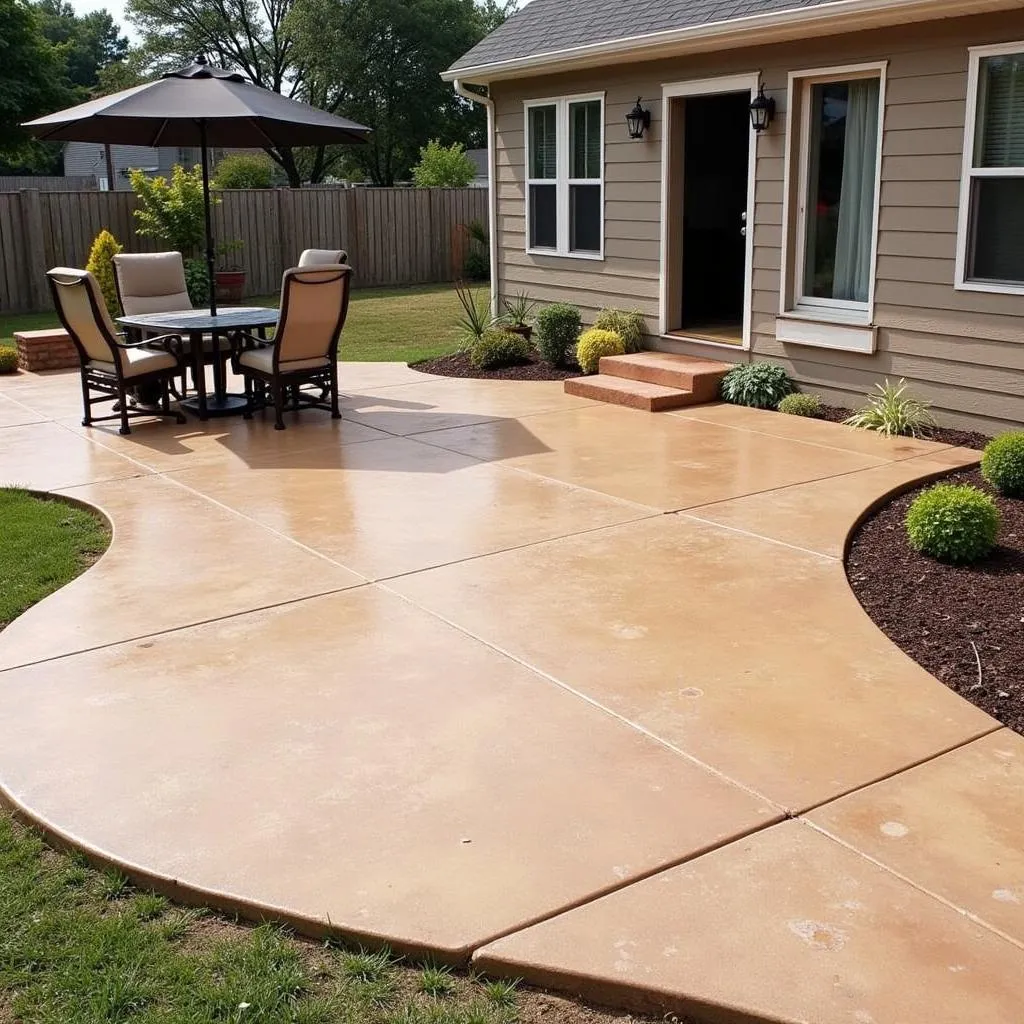Understanding Your Options for Coloring Concrete
Concrete is an incredibly versatile building material, but its natural gray hue doesn’t always inspire creativity. Fortunately, you can easily change the color of concrete to achieve the aesthetic you desire. Whether you’re looking to brighten up a dull patio, add a touch of elegance to your driveway, or create a unique design element in your home, there are various methods to transform your concrete surfaces.
Before diving into the how-to’s, it’s essential to understand the different ways to change concrete’s color. Each method offers unique advantages and considerations:
- Concrete Dyes: Dyes penetrate the concrete’s pores, creating a translucent color that won’t chip or peel. They offer a wide range of natural-looking shades and are ideal for achieving a mottled or variegated effect.
- Concrete Stains: Similar to dyes, stains react chemically with the concrete, resulting in a permanent color change. Stains provide a more subtle, translucent finish that highlights the concrete’s natural texture.
- Concrete Paint: A more affordable and readily available option, concrete paint creates a solid, opaque layer on the surface. While it offers a vast selection of colors and finishes, paint can chip, peel, or fade over time, requiring regular maintenance.
- Integral Color: This method involves adding pigments to the concrete mix before pouring. Integral color offers the most permanent and consistent color throughout the concrete, eliminating the risk of peeling or fading.
Choosing the Right Method for Your Project
The best method for changing the color of concrete depends on factors like your desired aesthetic, budget, and the surface’s location and condition. For instance, if you’re working with a new concrete patio and desire a lasting, vibrant color, integral color would be a suitable choice. On the other hand, if you’re revamping an existing driveway and prefer a more natural, weathered look, concrete stains might be more appropriate.
 Concrete Coloring Methods Comparison
Concrete Coloring Methods Comparison
Steps to Change the Color of Concrete
While each method has specific instructions, the general steps for changing the color of concrete involve:
- Surface Preparation: This is crucial for any method. Thoroughly clean the concrete surface to remove dirt, debris, grease, and any existing coatings. Repair any cracks or imperfections.
- Application: Depending on your chosen method, apply the dye, stain, or paint evenly using brushes, rollers, or sprayers. Follow the manufacturer’s instructions regarding drying times and multiple coats.
- Sealing: Once the color has dried completely, apply a concrete sealer to protect the surface from stains, UV damage, and wear and tear. This step also enhances the color and extends its lifespan.
Tips for Achieving Professional Results
- Test Before You Commit: Always test your chosen color on a small, inconspicuous area of the concrete to ensure you’re happy with the final result. Remember that colors can appear different on porous surfaces like concrete.
- Work in Small Sections: Whether you’re staining, dyeing, or painting, work in manageable sections to ensure even coverage and prevent the product from drying too quickly.
- Consider the Weather: Avoid applying any color treatment in direct sunlight or extreme temperatures, as it can affect drying times and potentially cause uneven results.
 Patio with Stained Concrete
Patio with Stained Concrete
“When choosing a color for your concrete, think about the surrounding environment,” advises renowned color specialist, Emily Carter. “Consider the colors of your home’s exterior, landscaping, and even the neighborhood’s overall aesthetic to create a harmonious and visually appealing space.”
Conclusion
Changing the color of concrete is a fantastic way to enhance the beauty and value of your home. By understanding the different methods available and following these guidelines, you can confidently transform your concrete surfaces into stunning focal points or seamlessly blend them with your existing decor.
FAQs
Can I change the color of old concrete?
Absolutely! You can successfully change the color of old concrete with proper preparation and by choosing a suitable method like staining or dyeing.
What is the most durable method for coloring concrete?
Integral color offers the most durable and long-lasting color change as the pigment is mixed directly into the concrete before pouring.
Can I change the color of stamped concrete?
Yes, you can change the color of stamped concrete using techniques like staining or dyeing, which can enhance the design’s details and create a more aged or weathered appearance.
How often do I need to reseal colored concrete?
The frequency of resealing depends on the sealer type and the amount of foot traffic the surface receives. Generally, resealing every 2-3 years is recommended to maintain optimal protection and color vibrancy.
Can I create patterns or designs with concrete color?
Certainly! You can achieve unique patterns and designs using various techniques like stenciling, stamping, or acid staining, allowing for endless creative possibilities.
 Decorative Concrete Staining Techniques
Decorative Concrete Staining Techniques
Let Color Box Hanoi be your trusted guide in the world of colors. Contact us at 0373298888, email us at [email protected], or visit our showroom at 86 Cau Giay, Hanoi. We’re here to help you create a space that reflects your unique style and vision.

